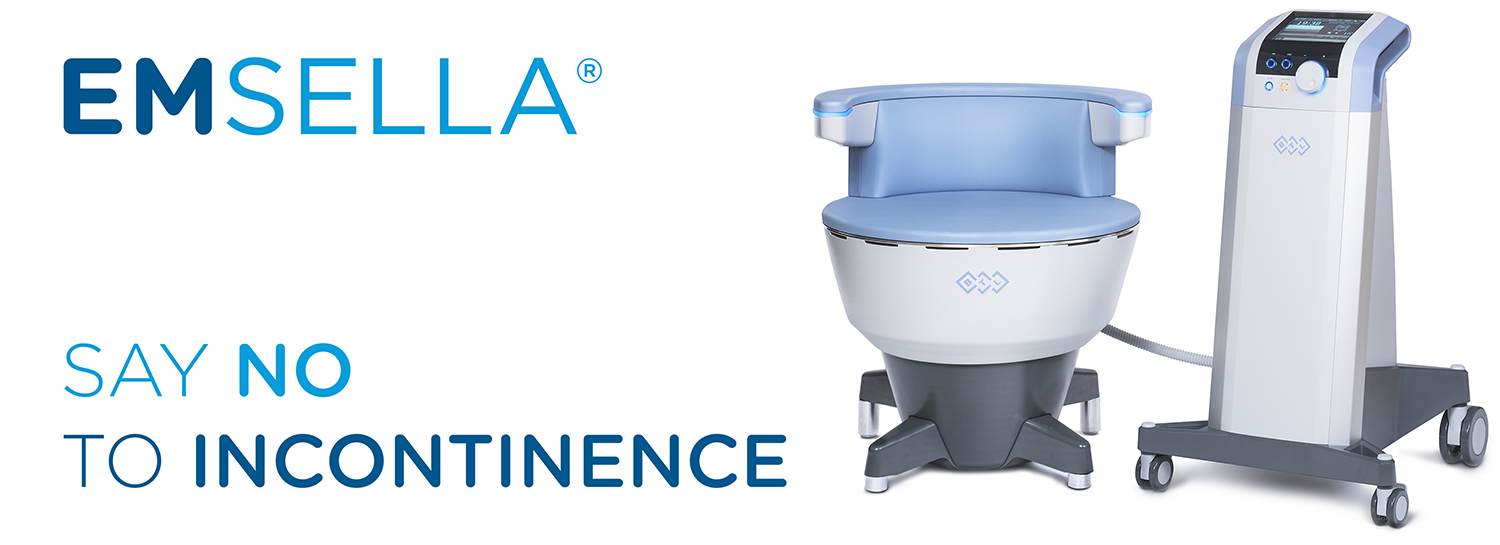EmSella Chair: Pelvic Floor Treatment - Chichester, West Sussex
The EmSella Chair is a breakthrough non-surgical, non-invasive treatment for all manners of Pelvic Floor Dysfunction for both Men & Women. It is an FDA-approved treatment for symptoms including Urinary Incontinence, and Sexual Health.
The EmSella chair uses electromagnetic frequencies to stimulate contraction of the pelvic floor, helping to increase strength and muscle tone to the pelvic floor muscles that have become weakened, damaged, or dysfunctional. The chair uses high-intensity focused electromagnetic (HIFEM) technology, causing deep pelvic floor muscle stimulation and restoration of the neuromuscular control.
One 30-minute treatment is equivalent to performing 11,000 Kegels (a common pelvic floor exercise).
Below you will find out all about Pelvic Floor Dysfunction, the symptoms that it can cause, and how EmSella treatment can help you.
When visiting the clinic you will be greeted with a big smile by one of our receptionists! Please make yourself feel at home in our waiting area. We advise all our patients to arrive at least 10 minutes before their appointment; this will allow you time to settle into the clinic before your appointment.
We have onsite parking located directly out the front of our clinic and a large overflow parking area that is available for our patients to use.
EmSella Can Help With;
- Urinary Incontinence
- Stress Incontinence
- Post-Pregnancy Pelvic Floor Rehabilitation
- Female Sexual Dysfunction
- Mild Erectile Dysfunction
- Post-Prostatectomy Incontinence
EmSella Facts
95%
of EmSella patients Reported Significant Quality of Life Improvements
75%
of EmSella patients Reported Significant Decrease in Urinary Leakage
66%
of EmSella patients Reduced or Eliminated Use of Hygenic Pads for Urinary Leakage
What is the Pelvic Floor?
The pelvic floor is a group of muscles, ligaments, and connective tissues that form a supportive sling at the bottom of the pelvis. It stretches from the pubic bone at the front of the body to the tailbone at the back of the body, and from one sitting bone to the other.
The pelvic floor plays an important role in supporting the pelvic organs, including the bladder, uterus, and rectum. It also plays a key role in controlling the function of the urinary and digestive systems. The muscles of the pelvic floor work together to help maintain continence and control the flow of urine and feces.
The pelvic floor muscles are also involved in sexual function, helping to support the clitoris, urethra, and vaginal opening in women, and the penis and anus in men. During sexual arousal, the muscles of the pelvic floor contract and relax rhythmically, contributing to the pleasurable sensations of orgasm.
The pelvic floor can become weakened or damaged due to a range of factors, including pregnancy, childbirth, menopause, obesity, chronic constipation, and certain medical conditions. When the pelvic floor muscles are weakened or damaged, it can lead to pelvic floor dysfunction and related conditions such as urinary incontinence, fecal incontinence, pelvic organ prolapse, and pelvic pain.
Traditional treatment options for pelvic floor dysfunction can include surgery, medication, and pelvic floor exercises such as Kegels. The breakthrough of the EmSella chair allows for non-invasive treatment, where you can stay fully clothed throughout, requires no medication, and one 30-minute treatment is equivalent to 11,000 kegels. Early intervention can help to prevent the condition from worsening and can improve your overall quality of life.
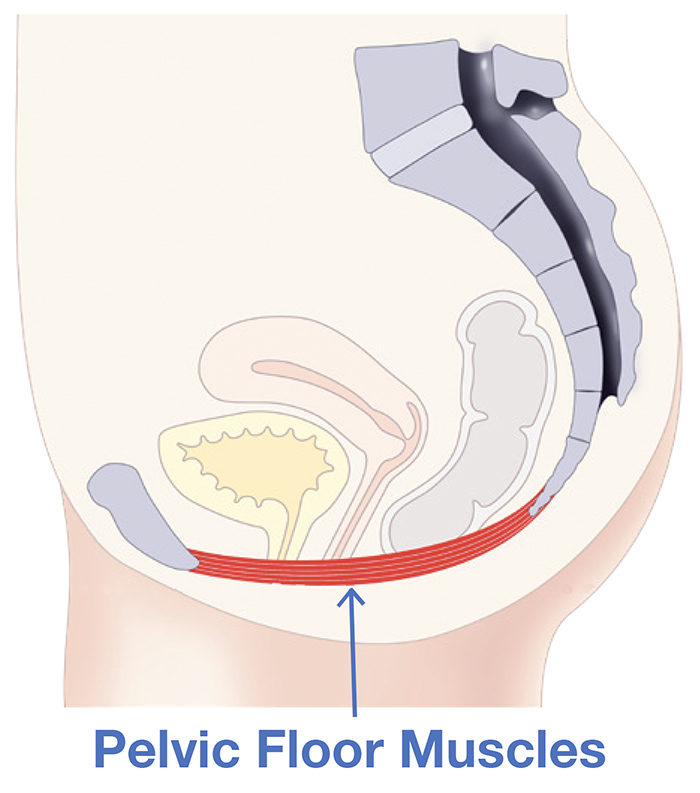

What is Pelvic Floor Dysfunction?
Pelvic floor dysfunction is a term used to describe a range of conditions that affect the muscles, nerves, and connective tissues in the pelvic region. This can include conditions such as urinary incontinence, faecal incontinence, pelvic organ prolapse, and pelvic pain. Pelvic floor dysfunction can affect both men and women, although it is more common in women. Over 200 million people worldwide are affected by urinary incontinence, so if this relates to you, you are not alone.
There are a number of factors that can contribute to pelvic floor dysfunction, however, they can all cause the muscles and tissues of the pelvic floor to weaken or become damaged.
Symptoms of pelvic floor dysfunction may include urinary or faecal incontinence, pelvic pain, difficulty emptying the bladder or bowels, and a sensation of pressure or heaviness in the pelvic region. These symptoms can be embarrassing and uncomfortable, and can significantly impact a person's quality of life.
In recent years, non-invasive EmSella treatments have also gained popularity as a safe and effective option for pelvic floor dysfunction. EmSella works by delivering electromagnetic waves to the pelvic floor muscles, causing them to contract and improve in strength and tone. EmSella has over 10 research papers showing its efficacy in treating Pelvic Floor related issues, these will be linked to at the bottom of this page.

Common Symptoms
Pelvic floor dysfunction can cause a variety of symptoms, some of the most common are listed here. EmSella can help to increase the tone and strength of the pelvic floor, improving symptoms and quality of life.
Stress Incontinence

Pelvic Pain
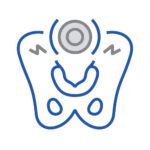
Painful Sex
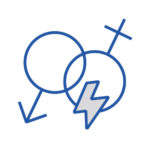
Erectile Dysfunction
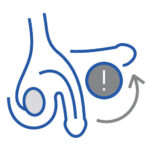
Urge Incontinence

Painful Urination
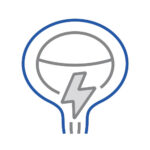
Reduced Lubrication
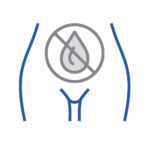
Reduced Sexual Desire

Bladder Fullness

Urine Leaking

Abdominal Pain
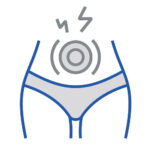
Emotional Distress


Pelvic Floor Dysfunction in Women
There are a number of factors that can contribute to pelvic floor dysfunction in women, these include pregnancy, childbirth, sexual trauma, menopause, and lack of exercise can all cause the muscles and tissues of the pelvic floor to weaken or become damaged. Other factors such as obesity, chronic constipation, and certain medical conditions can also contribute to pelvic floor dysfunction.
Symptoms of pelvic floor dysfunction in women may include urinary or fecal incontinence, pelvic pain, difficulty emptying the bladder or bowels, and a sensation of pressure or heaviness in the pelvic region. Treatment options for pelvic floor dysfunction in women may include pelvic floor exercises, medications, or surgery. It is important to consult with a healthcare professional if you are experiencing symptoms of pelvic floor dysfunction. Early intervention can help to prevent the condition from worsening and can improve your overall quality of life.
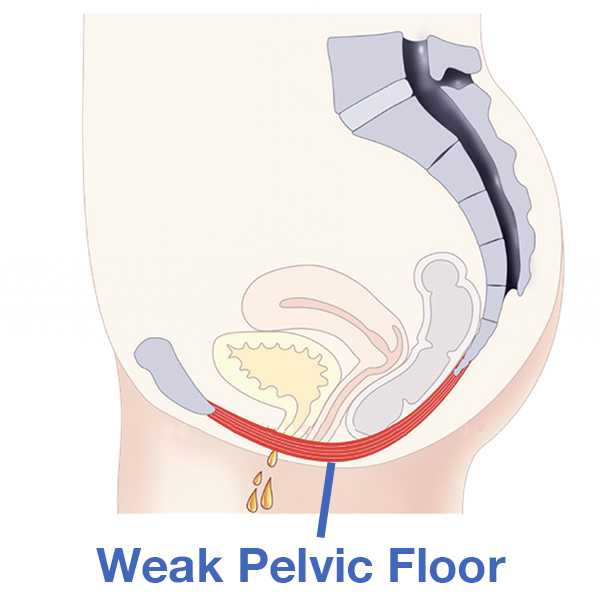
Causes of Pelvic Floor Dysfunction
Pregnancy and childbirth: Pregnancy and childbirth can cause the muscles and tissues of the pelvic floor to stretch and weaken. This can lead to pelvic floor dysfunction and related conditions such as urinary incontinence or pelvic organ prolapse.
Menopause: The hormonal changes associated with menopause can also contribute to pelvic floor dysfunction. As estrogen levels decline, the tissues of the pelvic floor can become thinner and weaker.
Chronic constipation: Chronic constipation can also contribute to pelvic floor dysfunction in women. Straining during bowel movements can put pressure on the pelvic floor muscles, causing them to weaken or become damaged.
Obesity: Obesity can also be a risk factor for pelvic floor dysfunction in women. Excess weight can put pressure on the pelvic floor muscles, which can weaken them over time.
Certain medical conditions: Medical conditions such as diabetes, multiple sclerosis, or spinal cord injuries can also contribute to pelvic floor dysfunction in women. These conditions can affect the nerves and muscles in the pelvic area.
Aging: Aging is also a risk factor for pelvic floor dysfunction in women. As women age, the muscles and tissues in the pelvic area may naturally weaken, which can affect the function of the pelvic floor muscles.
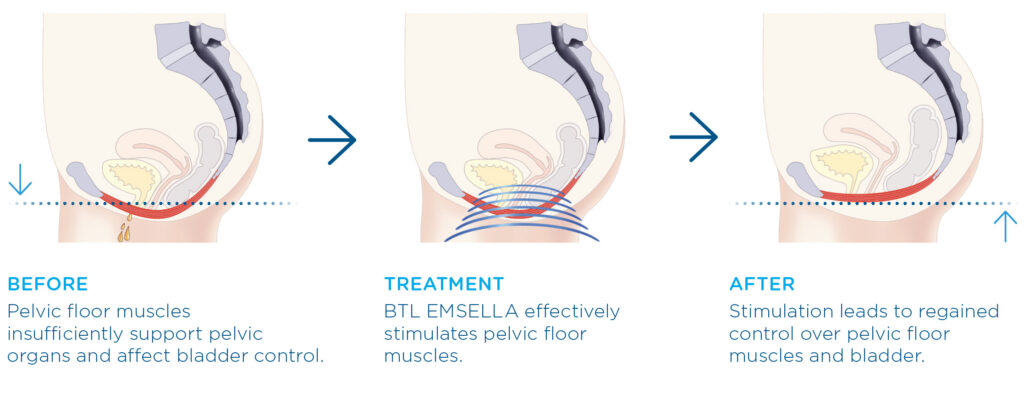

Pelvic Floor Dysfunction in Men
There are a number of factors that can contribute to pelvic floor dysfunction in men, these include prostate issues, surgeries affecting the pelvic floor, nerve damage, and ageing can all cause the muscles and tissues of the pelvic floor to weaken or become damaged. Other factors such as obesity, chronic constipation, and certain medical conditions can also contribute to pelvic floor dysfunction.
Symptoms of pelvic floor dysfunction can vary depending on the specific condition but may include urinary or fecal incontinence, erectile dysfunction, pelvic pain, difficulty emptying the bladder or bowels, and a sensation of pressure or heaviness in the pelvic region. These symptoms can be embarrassing and uncomfortable, and can significantly impact a person's quality of life.
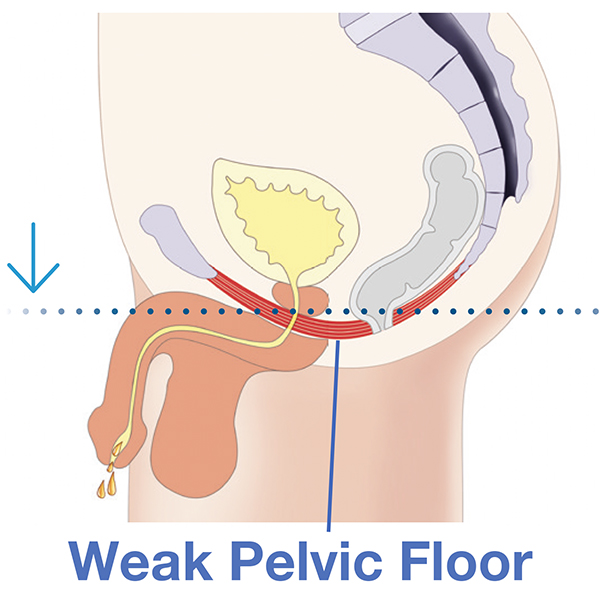
Causes of Pelvic Floor Dysfunction
Prostate problems: Conditions such as prostate cancer, prostatitis, and benign prostatic hyperplasia (BPH) can all cause pelvic floor dysfunction in men. These conditions can affect the function of the prostate gland, which is located near the pelvic floor muscles.
Pelvic surgery: Men who have undergone surgery in the pelvic area may be at risk for pelvic floor dysfunction. Surgery for prostate cancer, rectal cancer, or bladder cancer, for example, can all affect the function of the pelvic floor muscles.
Nerve damage: Nerve damage in the pelvic area can also cause pelvic floor dysfunction in men. This can be caused by conditions such as multiple sclerosis, spinal cord injury, or diabetes.
Obesity: Obesity can also be a risk factor for pelvic floor dysfunction in men. Excess weight can put pressure on the pelvic floor muscles, which can weaken them over time.
Chronic constipation: Chronic constipation can also contribute to pelvic floor dysfunction in men. Straining during bowel movements can put pressure on the pelvic floor muscles, causing them to weaken or become damaged.
Aging: Aging is also a risk factor for pelvic floor dysfunction in men. As men age, the muscles and tissues in the pelvic area may naturally weaken, which can affect the function of the pelvic floor muscles.
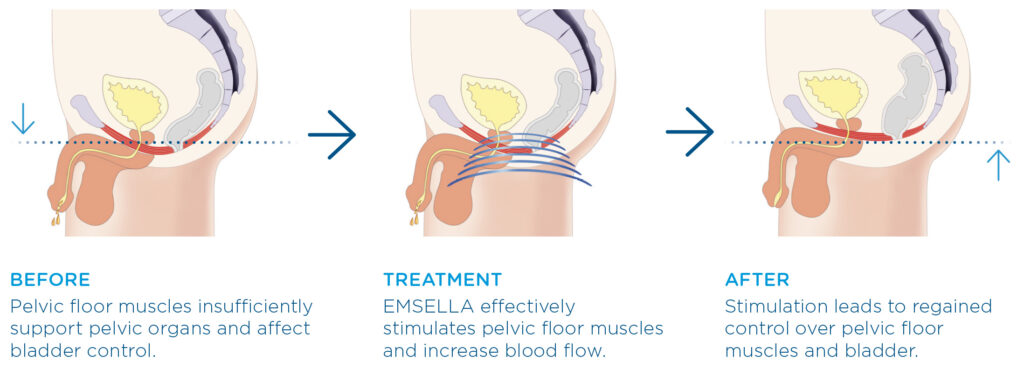

What is an EmSella?
EmSella is a non-invasive medical device that uses high-intensity focused electromagnetic (HIFEM) technology to stimulate pelvic floor muscles. It is designed to help improve pelvic floor strength and treat urinary incontinence and sexual dysfunction in both men and women. This innovative technology has been gaining popularity as a safe and effective treatment for a range of pelvic floor disorders.
EmSella works by delivering electromagnetic waves to the pelvic floor muscles, which causes them to contract and relax rapidly. This is similar to the contractions that occur during Kegel exercises, but the stimulation is more intense and targeted. The electromagnetic stimulation provided by EmSella is designed to improve the strength and tone of the pelvic floor muscles, which can help to improve urinary control and reduce urinary leakage.
EmSella treatment appointments typically last around 30 minutes, and most patients require a series of sessions to achieve optimal results. During the treatment, you will remain fully clothed, and sit on the EmSella chair. The EmSella then generates electromagnetic waves that stimulate your pelvic floor muscles, causing them to contract and relax rapidly. The sensation is often described as mild tingling or buzzing, and is not painful or uncomfortable.
Treatment is convenient and a good treatment option for those who want to avoid the risks and downtime associated with invasive procedures.
Prior to starting your treatment, you will have an in-depth consultation to help determine the most appropriate treatment plan for you.

![]()
Scientific research has shown that 95% of treated patients reported significant improvement in their quality of life.*
Walk-In & Out Procedure
![]()
Non-Invasive Treatment
![]()
Remain Fully Clothed
![]()
75% Less Pad Use*
![]()

Our Patients
So, who is a good candidate for EmSella treatment? Men and women who experience urinary incontinence or other pelvic floor disorders may benefit from this treatment. It is particularly effective for women who have weakened pelvic floor muscles due to childbirth, menopause, or other factors. EmSella can also be a good option for women who have tried other treatments for urinary incontinence without success.
Prior to starting treatment, you will have a telephone consultation to determine the most appropriate treatment plan for your specific goals.
At the end of your treatment plan, your Pelvic Floor Specialist will recommend whether any maintenance treatment is required to maintain your results.
EmSella is a relatively quick and convenient treatment option, with no downtime required after the treatment.
Book Your Consultation
Booking your consultation is easy, simply click the link below and select a day and time that works for you. Your consultation will be via telephone.
Prior to the consultation, you will be required to complete an online health questionnaire, this will help your Specialist to build a complete picture of your background, health, and symptoms, allowing them to become familiar with your case prior to consulting with you.
The consultation should last no more than 30 minutes, allowing enough time for you to ask any questions you may have, and by the end of the appointment, your specialist should be able to recommend the most appropriate treatment plan tailored to your needs.
Book Your EmSella Consultation

Pelvic Floor Specialist - Amelia Altenburger
Amelia graduated from The University of Chichester with a Bachelor’s degree in Physiotherapy and is registered with the HCPC. As a Physiotherapist Amelia has experience working with patients of all ages, with a variety of conditions. Amelia uses a holistic approach to help her patients, focusing on restoring their overall quality of life.
She has a particular interest in pelvic health, focusing on helping patients with pelvic floor dysfunction and other related conditions. Amelia’s passion for physiotherapy stems from a young age, which sparked a deep interest in understanding the body's healing processes and helping others regain their strength and confidence. Amelia’s approach combines her experience, and academic knowledge, combined with a compassionate attitude. Amelia looks at the whole person and takes all factors into account when creating a personalised treatment plan, aimed at improving her patients' overall well-being.
Book Your EmSella Appointment with Amelia
Book Your First Appointment Online
If you are ready to start your journey back to pelvic floor health, you can book your EmSella Consultation in multiple ways. You can either call our friendly reception team on 01243 913923, or you can click the link below to go to our Online Booking page. The ability to book online isn't just available for new patients, this can also be used to book future EmSella appointments, allowing you the flexibility to book appointments at your leisure and from anywhere.
After booking your appointment, you will be sent 2 emails; the first will simply confirming your appointment is booked. The second will include a link where you can complete your EmSella Intake questionnaire, completing this prior to your appointment will allow your Specialist to review the information before consulting with you.
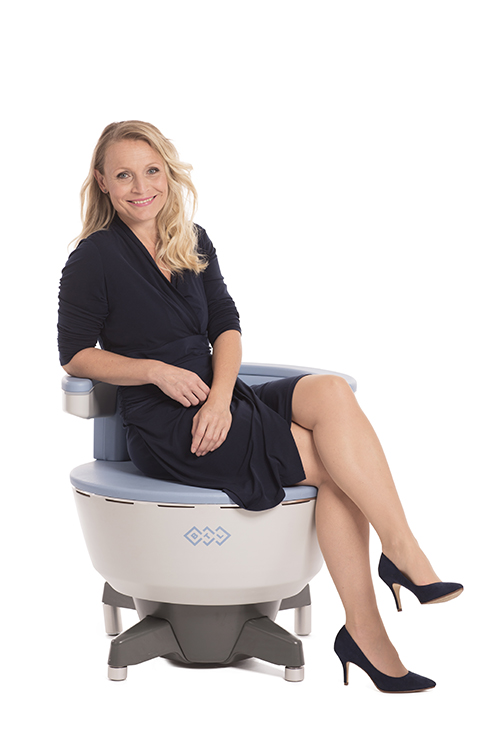
Checklist for New or Returning Patients:
If it is your first time visiting the clinic, or if you haven’t seen us for a few years, we like to spend some time going through your current and previous health and lifestyle, catching up and ensuring we have a full view of your history. Below are some of the details you will need to complete on your Online Intake Form.
- List of current medications and dosage
- Details of diagnosed conditions (including dates)
- Details of operations and other medical procedures (including dates)
After completing the Online Intake Form, Amelia will review these details prior to your appointment, helping to guide your consultation and treatment recommendations. If you are unable to complete these details before your appointment for any reason, please let us know so we can allow additional time for this during your Consultation appointment.

First Appointment - Initial Consultation
Your Pelvic Floor rehabilitation journey starts here... when you book your first appointment we will email you an online health questionnaire, helping your Pelvic Floor specialist to build a complete picture of who you are and why you are coming to see us.
Your Pelvic Floor Specialist will then consult with you about your symptoms, how they started, and what makes them better or worse, discuss any previous treatment you have tried and ask some specific questions to help them determine their next course of action. Once your Pelvic Floor Specialist is happy they have all of the information about you and your symptoms, they will then advise on the best treatment plan tailored to your needs.
The consultation will include an in-depth discussion about all aspects of your urinary function, and sexual health (if required), discussing when your first noticed symptoms, how your symptoms present, and how they impact your quality of life, and discuss any treatments you may have previously tried. It is important to be open and honest during this consultation, as any and all information is important in creating the most appropriate treatment plan to help in rehabilitating your Pelvic Floor and core muscles.
Once your Pelvic Floor Specialist is happy they have all the necessary information to assess your case, they will discuss their findings, and if you are both happy they will explain their recommended treatment plan, answer any questions you may have regarding treatment, and book your appointments for your initial phase of care. Your Pelvic Floor Specialist will track your progress over your initial phase of care and will arrange a follow-up consultation at the end to discuss the next stages and recommendations.
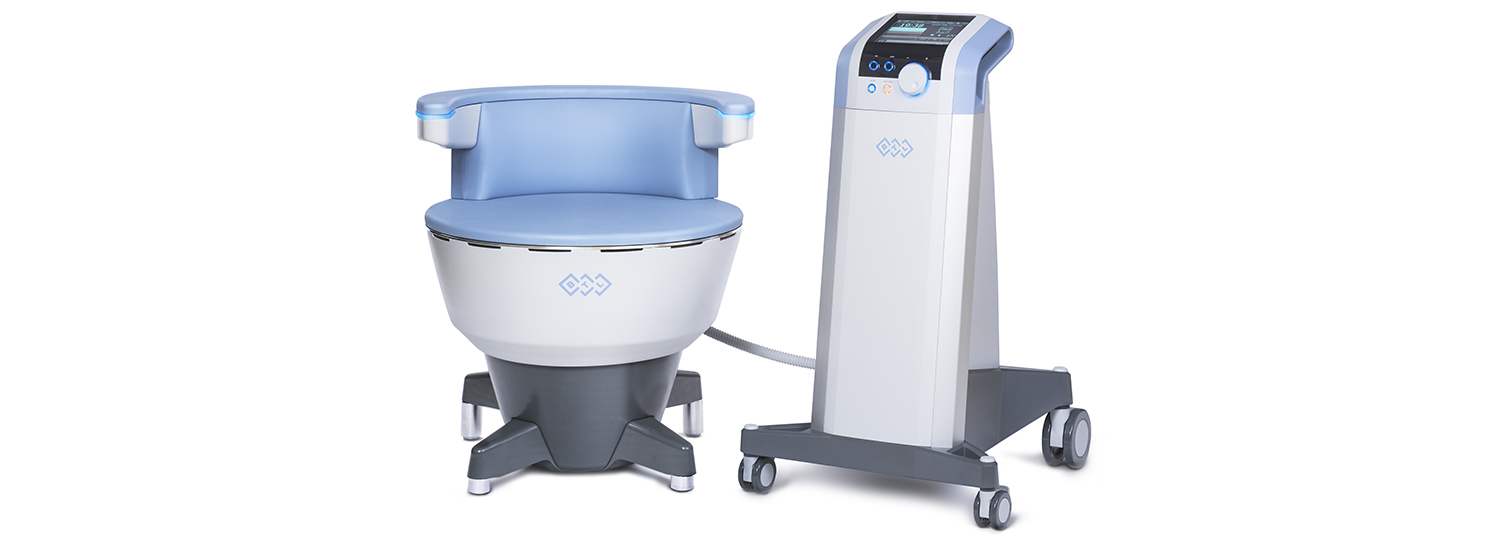
![]() Walk In & Out Treatment
Walk In & Out Treatment
![]() Non-Invasive Treatment
Non-Invasive Treatment
![]() Remain Fully Clothed
Remain Fully Clothed
![]() Easy & Conveniant
Easy & Conveniant
EmSella Treatment
Following your Consultation, your Pelvic Floor Specialist will start by booking your first phase of care. Below we will discuss the different phases of care, what they entail, what to expect, and a rough timeline, although this can vary depending on your unique presentation, symptoms, and findings from your consultation.
Phase 1 - Strengthen & Tone
The first phase of care is focused on restoring strength and tone to the pelvic floor. This first phase of care is typically the most intensive, lasting from 3 to 6 weeks, and with treatments 1 to 2 times per week. The exact frequency and length of the first phase are determined on a case-by-case basis and personalised to your recovery plan. This phase of care will start to rebuild the essential muscles in your pelvic floor and core, helping your body to support and stabilise the bladder, colon and sexual organs, helping to start relieving the symptoms associated with pelvic floor dysfunction.
Phase 2 - Stabilisation
Following successful completion of the initial phase of care, you will progress to the second phase, which is focused on stabilising the pelvic floor muscles, whilst continuing to increase pelvic floor strength. The second phase of care reduces the frequency of treatments, scheduled 2 weeks apart, and for 3 to 6 treatments. The exact frequency and length of the second phase are determined on a case-by-case basis and will be strongly influenced by the progress in phase 1. This phase of care will continue to build the strength and tone in the muscles in your pelvic floor and core, allowing your stronger pelvic floor to support and stabilise the bladder, colon and sexual organs, allowing you to live without the symptoms associated with pelvic floor dysfunction.
Phase 3 - Maintenance
The maintenance phase of care is the most important phase of care. After working so hard to rebuild, strengthen, tone and stabilise the pelvic floor, it is important to maintain this progress with periodic maintenance treatments. The third phase of care reduces the frequency of treatments to a maintenance level of 4 treatments per year, with each being 3 months apart. In those with damage to the pelvic floor, or particularly chronic symptoms, the frequency of maintenance can be more frequent. This phase of care will maintain the strength and tone in the pelvic floor, supporting the bladder, colon and sexual organs, allowing you to live your life on your terms.

EmSella Chair
The Emsella chair offers a wide padded seat, which can be raised up and down at the press of a button, helping the EmSella be comfortable for all. The chair also has arms rests for those who prefer this kind of support. Treatment is mostly comfortable with the intensity of pelvic floor stimulation being fully customisable by the patient during the appointment, with a scale of intensity from 0-100 on a turning dial.
The EmSella chair uses electromagnetic frequencies to stimulate contraction of the pelvic floor, helping to increase strength and muscle tone to the pelvic floor muscles that have become weakened, damaged, or dysfunctional. The chair uses high-intensity focused electromagnetic (HIFEM) technology, causing deep pelvic floor muscle stimulation and restoration of your brain's natural control.

One 30-minute treatment is equivalent to performing 11,000 Kegels!
Proven Results
EmSella comes with research-driven results, giving you peace of mind when choosing the treatment that is right for you.
Some patients can begin to have improvements in their urinary incontinence symptoms and notice the differences in pelvic floor tightening after just one Emsella treatment. These results should continue to compound after each treatment and phase of care over the following weeks and months.
BEFORE

AFTER
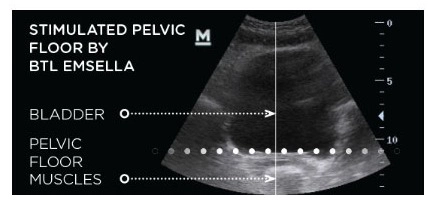
95% of patients reported significant improvement
Pelvic floor exercises, also known as Kegel exercises or pelvic floor muscle training, are commonly recommended to prevent and manage urinary incontinence and pelvic floor issues. These exercises aim to strengthen the muscles supporting the bladder, uterus, small intestine, and rectum.
Emsella utilizes High-Intensity Focused Electromagnetic technology (HIFEM) to stimulate the pelvic floor muscles and restore neuromuscular control. Through muscle contractions, it helps repair the pelvic floor, allowing patients to regain control over their bladder. A single session of Emsella provides numerous supramaximal pelvic floor muscle contractions, which are crucial for re-educating the muscles in patients with incontinence. It is reported that one Emsella session is equivalent to performing 11,000 Kegel exercises.
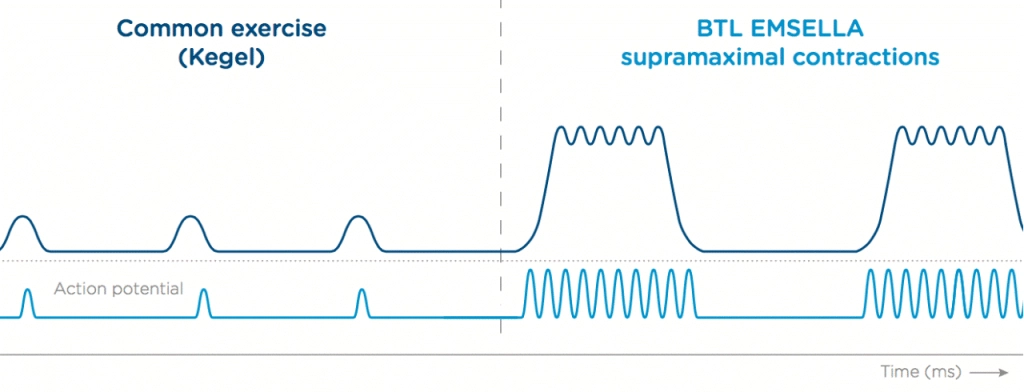
The EmSella contractions are far superior to those provided solely through Kegel exercises, this is both in intensity, frequency of contractions and depth of the contractions. This unique combination is what allows for such effective and fast treatment for both acute (short term) and chronic (long term) pelvic floor dysfunction.
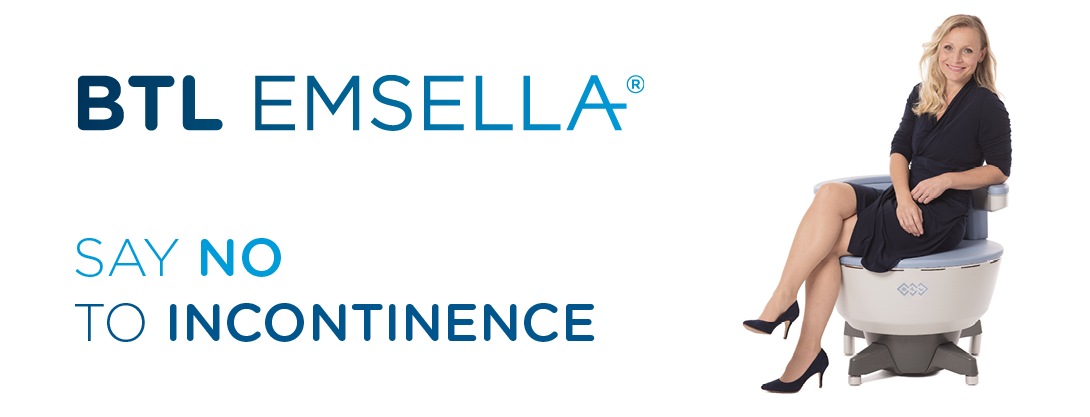
Book Your Consultation
To book your initial consultation please either call us on 01243 913923, or you can Book Online by either clicking the link below or following the steps on this page.
Book Your ConsultationCall To Book - 01243 913923

Unsure about treatment?
If you are unsure whether EmSella is the right option for you or have questions about this type of treatment, please book a FREE Preliminary Consultation. This short conversation with Amelia Altenburger will help determine whether EmSella Pelvic Floor treatment suits you. At this appointment, Amelia will ask questions about your reasons for seeking help and answer any questions you may have regarding treatment.
After booking your appointment, you will be sent 2 emails; the first will simply confirming your appointment is booked. The second will include a link to complete your EmSella Intake questionnaire; completing this before your appointment will allow your Specialist to review the information before consulting with you.


Frequently Asked Questions
There should be no pain during the treatment. You will feel the muscles in the pelvic floor contracting repetitively during your 30-minute appointment, however, you are able to control the intensity of the pelvic floor contractions by turning a dial on the machine, at any time during your appointment. You can control the intensity, so when you feel ready for more, you can increase slowly and progressively. The EmSella offer an intensity rating from 0-100, with the most benefits found at 100. It can take 2-3 EmSella treatments until you are ready for the higher numbers, but with time your Pelvic Floor will get stronger and more able to adapt to the contractions. Most will notice an improvement after a single session of Emsella treatment, feeling improvements in urinary incontinence and pelvic floor tightening. These initial results will progressively enhance over the subsequent weeks. To achieve optimal outcomes, we recommend that patients undergo their initial 2 phases of care, and continue with maintenance care ongoing. Most people will notice significant changes to their symptoms and quality of life by approximately three months following starting their Pelvic Floor rehabilitation programme, with many having no ongoing symptoms. EmSella is effective for a wide variety of men and women, each with their own symptoms and stories. If you have experienced leakage, sudden need to pee, pain holding your pee, painful sex, lack of sexual arousal, erectile dysfunction or any other pelvic floor dysfunction symptoms, the likelihood is EmSella can help you. Your appointments will be 30 minutes each, with availability from 9:30 am Monday to Thursday, 9 am on Friday and 10 am on Saturday, with our last appointment of the day starting at 5:30 pm Monday to Thursday, 4:30 pm on Friday and 1:30 pm on Saturday. The treatment is non-invasive, walk-in and walk-out, where you remain fully clothed throughout (although we do recommend wearing comfortable clothing), so you are able to get on with the rest of your day straight after, with no downtime. Certainly yes! Emsella has now received FDA approval for use in men. It has shown remarkable results in reducing leakage that may occur after treatments like a prostatectomy, or leakage during intense workouts or towards the end of the day. Emsella has proven to be an effective treatment in minimizing such occurrences. Not all men experiencing incontinence have undergone surgery, some may experience significant urgency and frequency in urination. Thankfully Emsella provides a non-invasive solution for managing overactive bladder symptoms. EmSella has also proven to be very effective at treating men who suffer from mild erectile dysfunction, allowing them to achieve and maintain an erection when it matters most. If you have any questions regarding EmSella and how it may help you, or your man, please do not hesitate to contact us. No. We view every client on an individual basis and formulate treatment plans to suit them. The initial phase of care is based on the patients' symptoms and clinical history, with the second and third phases based on improvements in the preceding phases of care. Every body is different, and we take that into account when you visit us. Every body and every pelvic floor is different, however, there is a fairly accurate range for each phase of care. Phase 1 will typically be 6 appointments over an initial 3 week period (twice a week ideally), Phase 2 will vary with each patient, varying from weekly for 3 weeks, or every 2 weeks for 3 appointments. We do recommend maintenance sessions following the successful completion of your 2 phases of care, which for most will be every 12 weeks (4 times per year), this will help to keep the strength and maintain your progress achieved. Prevention is always preferable to seeking a cure. Therefore, women of childbearing age who intend to have children should prioritize strengthening their pelvic floor to withstand the additional weight and pressure during pregnancy. A stronger pelvic floor can also contribute to a smoother and quicker delivery. Additionally, enhancing core strength will be beneficial in this regard. YES! Not only can EmSella offer the benefits of improved urinary function, less leaking, increased bladder resilience, improved quality of life, improved sexual desire, improved erections, better feelings during sex, better orgasms, less pads and a stronger pelvic floor, HOWEVER, EmSella can also reduce Lower Back Pain. Core strength relies heavily on the pelvic floor's contribution, and merely targeting the abdominal muscles is insufficient for achieving a tight core. The interconnectedness of these muscles means they work in harmony with each other, so neglecting the pelvic floor and having a weak core can result in lower back pain. Strengthening the pelvic floor with Emsella can contribute to a stronger core, alleviating lower back pain, and improving posture. No. You can stay fully clothed during your EmSella appointments, however, we do recommend that you wear comfortable clothes.

What's Next?
The next step is booking your consultation with Amelia who will help formulate the best plan to rehabilitate your pelvic floor. You can book this appointment by either calling us at 01243 913923, or you can Book Online by either clicking the link below or following the steps on this page.
Terry was polite, friendly and took time to listen to all my symptoms and history. Within an hour he has done a physical exam, X-rays and discovered I had compression in my L5 - S1 Vertebrae with a degree of slipping. A few adjustments to make me more comfortable until he could fully review X-rays and design a course of corrective action !!! Feel more mobile with just the small amount of correction & at only 34 it was a relief to realise I would not have to put up with the discomfort for the next 30+ years !
After just three sessions, I’m already noticing significant improvements, which speaks to his skill and professionalism.
Additionally, the transparent pricing and straightforward invoicing have made it easy to claim through my insurance, removing any unnecessary stress. If you’re looking for a knowledgeable, thorough, and effective chiropractor, Chichester Chiropractic Health Centre is an excellent choice!
Thoroughly recommend CCHC.

Find Us
Conveniantly Located in Chichester, West Sussex
Telephone: 01243 913923
simply click the link below and check availability.

